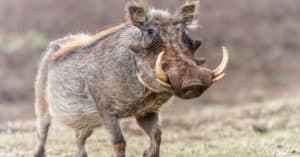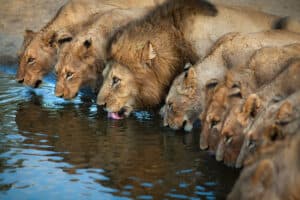The pronghorn is a North American even-toed, hoofed artiodactyl. North America is now the only home for pronghorns. Although they once lived from southern Canada to northern Mexico. Pronghorns are most common in Arizona, Colorado, Montana, Nevada, New Mexico, Northeast California, Southeast Oregon, the Great Plains, Utah, and Wyoming. Yellowstone and Wyoming’s Red Desert have strong pronghorn populations. Pronghorns prefer plains, fields, grasslands, brush, deserts, and basins.
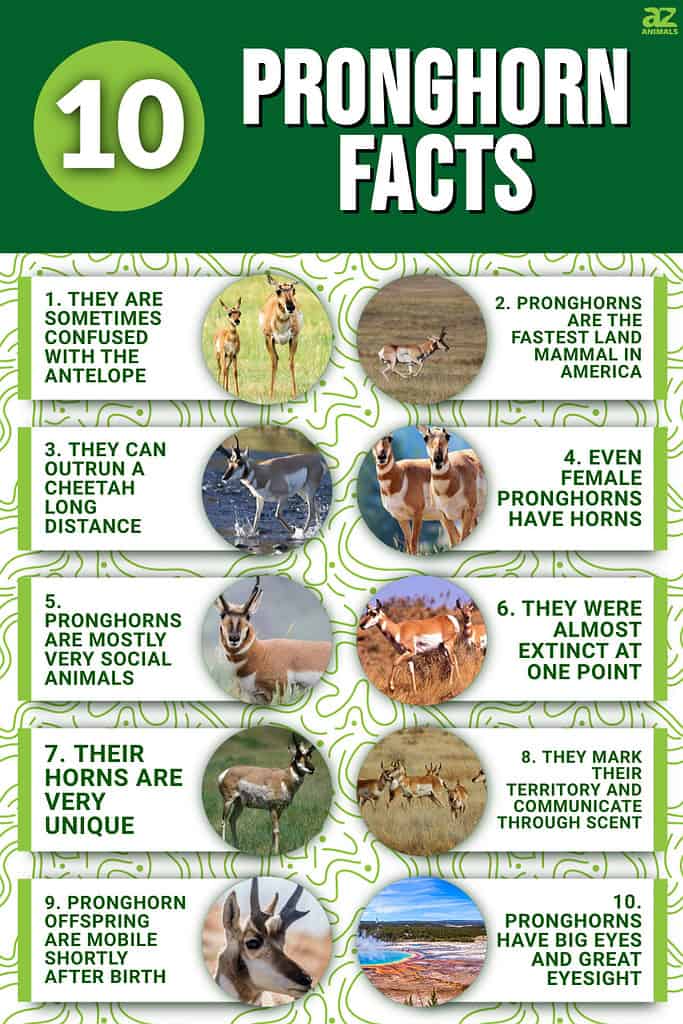
Pronghorn travel between summer and winter grazing places to live. Pronghorns have yellowish-brown to reddish-brown fur with white stripes on their necks and mouths. Male pronghorns have black throats and faces. For 10 Incredible Pronghorn Facts, keep reading!
1. They Are Sometimes Confused With The Antelope
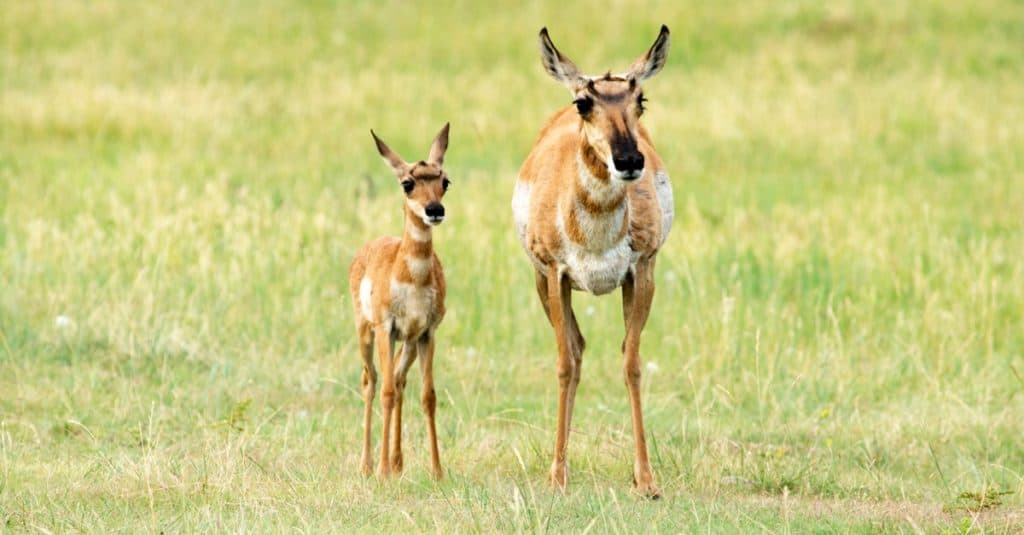
Like antelope and goats, pronghorn are hoofed ungulates.
©iStock.com/Brent_1
Although not actually an antelope, the American pronghorn is commonly referred to as such due to its many common names. It’s like Old World antelopes and has a similar ecological role in North America according to parallel evolution. The Antilocapridae family now consists of only one animal.
Despite their common misidentification, pronghorns are not true antelope. There are no other living members of the Antilocapridae family, and most scientists agree that all other horned ungulates (mammals with hooves) in North America belong to the Bovidae family. Like antelope and goats, pronghorn are hoofed ungulates. Their body is shaped like a deer’s, with long legs and a long nose but a short tail.
2. Pronghorns Are The Fastest Land Mammal In America
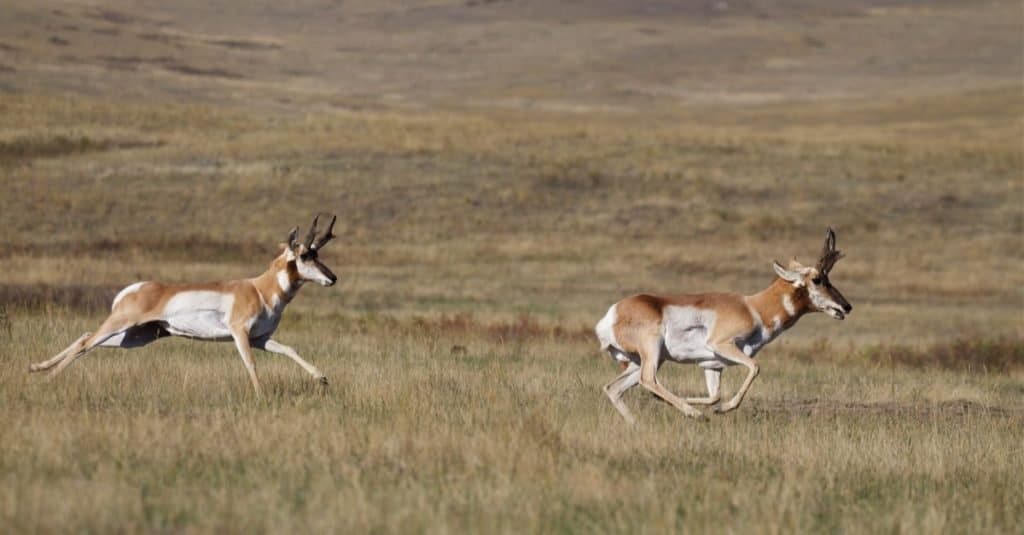
Pronghorns can run up to 60 miles per hour. Wow! Comparable in speed to a
cheetah
.
©Tom Reichner/Shutterstock.com
Not only do pronghorns have the longest land migration in the United States, but they also set the record for the overall fastest land animal in North America. Pronghorns can run up to 60 miles per hour. Wow! Comparable in speed to a cheetah.
3. They Can Outrun A Cheetah Long Distance
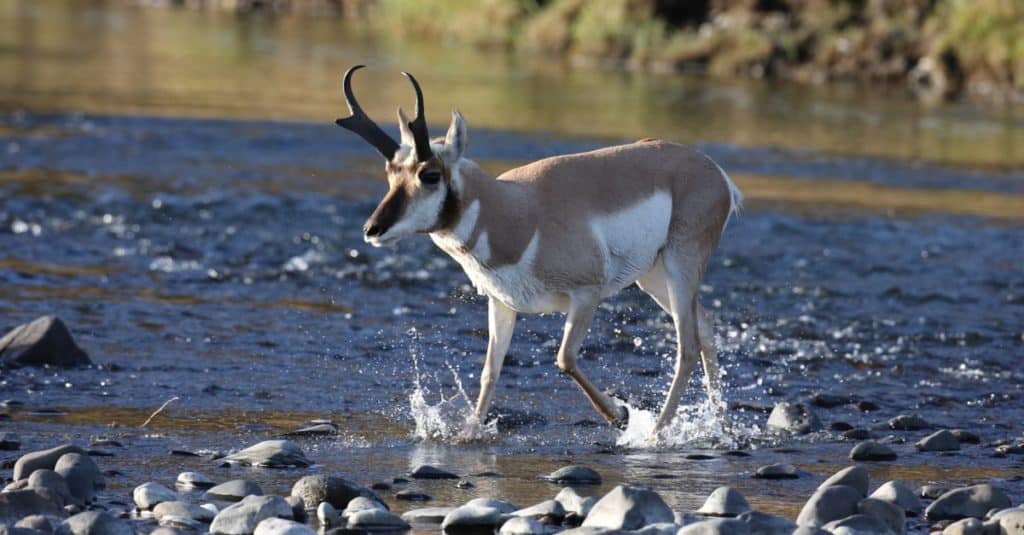
Having evolved to run quickly away from danger over long distances, pronghorns are capable of speeds that would put them ahead of a cheetah.
©Frank Fichtmueller/Shutterstock.com
It’s often ranked as the second-fastest land animal, behind only the cheetah. But it can keep up its rapid speed for much longer than a cheetah. Having evolved to run quickly away from danger over long distances, pronghorns are capable of speeds that would put them ahead of a cheetah. This is because they risk losing their very lives if they do not act quickly.
4. Even Female Pronghorns Have Horns
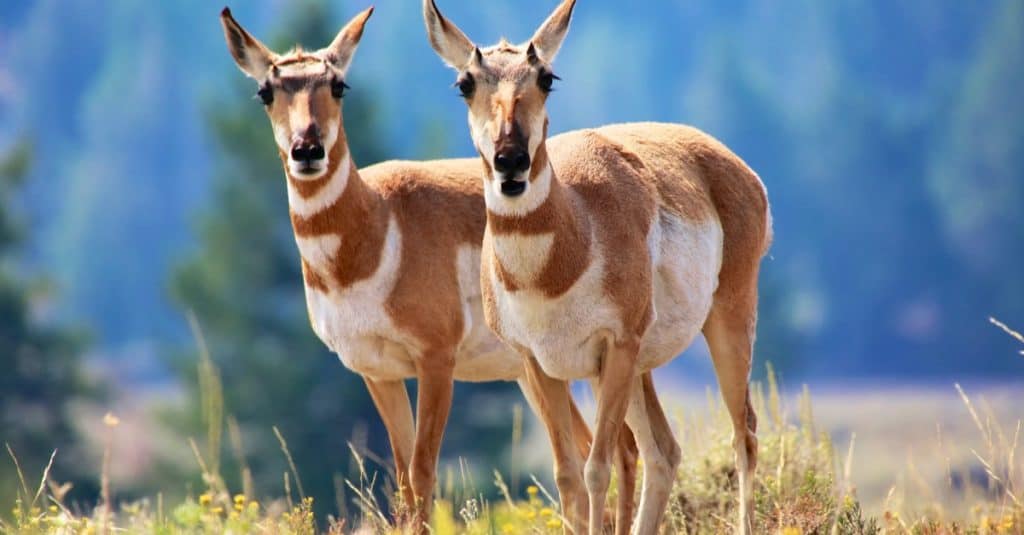
Pronghorns are the only creatures that regularly shed their forked horns.
©matthieu Gallet/Shutterstock.com
True horns feature a single point rather than the several prongs or forks of antlers. However, the male pronghorn’s forward-pointing horns can grow to 10 inches in length (25 cm). This leads to the pronghorn’s name. Female pronghorns, much like their male counterparts, have their horns, albeit much smaller ones. Pronghorns are the only creatures that regularly shed their forked horns.
5. Pronghorns Are Mostly Very Social Animals
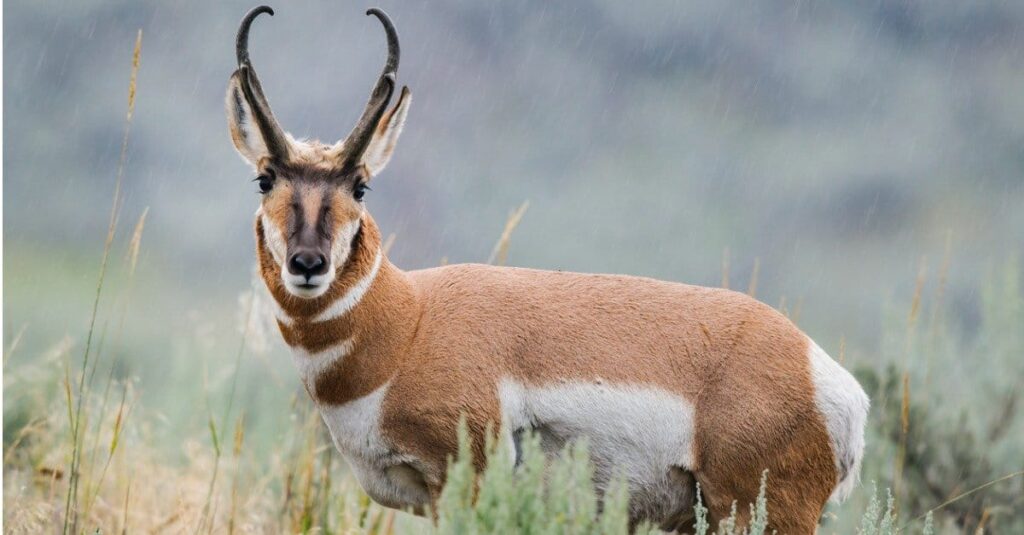
While not true antelopes, pronghorn is sometimes called American Antelopes.
©BGSmith/Shutterstock.com
Pronghorns are herd animals that tend to travel in large groups. On the other hand, during the spring, bucks frequently venture out alone and in small groups. The mating season for pronghorns is in September and October. For protection from other males, polygamous bucks build harems of up to ten does.
During the winter, herds of pronghorn can reach 1,000 members, with individuals of both genders and ages. In the spring, the flocks of females dispersed into smaller groups, while the males formed bachelor groups of 1–5 years of age, and the older males tended to wander alone.
6. They Were Almost Extinct At One Point

Due to restrictions on shooting and the preservation of suitable habitats, pronghorn numbers have increased.
©Jack Dykinga / Public domain, from Wikimedia Commons, the free media repository – License
Due to extensive preservation efforts, pronghorns have recovered from near extinction in the late 19th century. Numerous predators prey on pronghorns, including wolves, cougars, bobcats, coyotes, wild dogs, and golden eagles. Due to restrictions on shooting and the preservation of suitable habitat, pronghorn numbers have increased to somewhere between 500,000 and 1,000,000.
7. Their Horns Are Very Unique
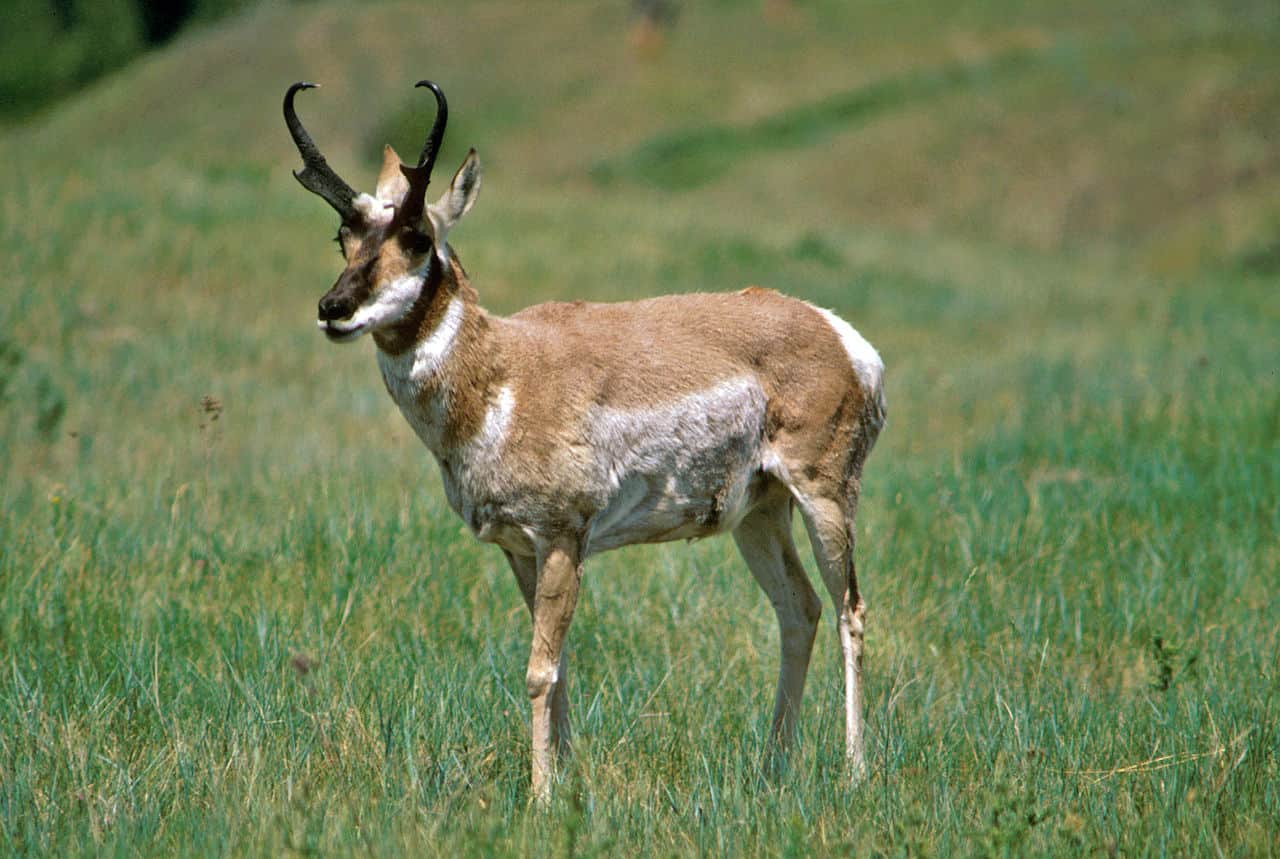
The pronghorn’s horns are not antlers but false horns.
©Leupold, James C., Public domain, via Wikimedia Commons – License
They are like horns and antlers put together. While actual antlers are composed of bone and shed annually, true horns are constructed of compacted keratin that develops from a bony core and never sheds. The pronghorn’s horns are not antlers, but false horns, and the horns’ sheath is made of keratin but falls off annually.
8. They Mark Their Territory and Communicate Through Scent
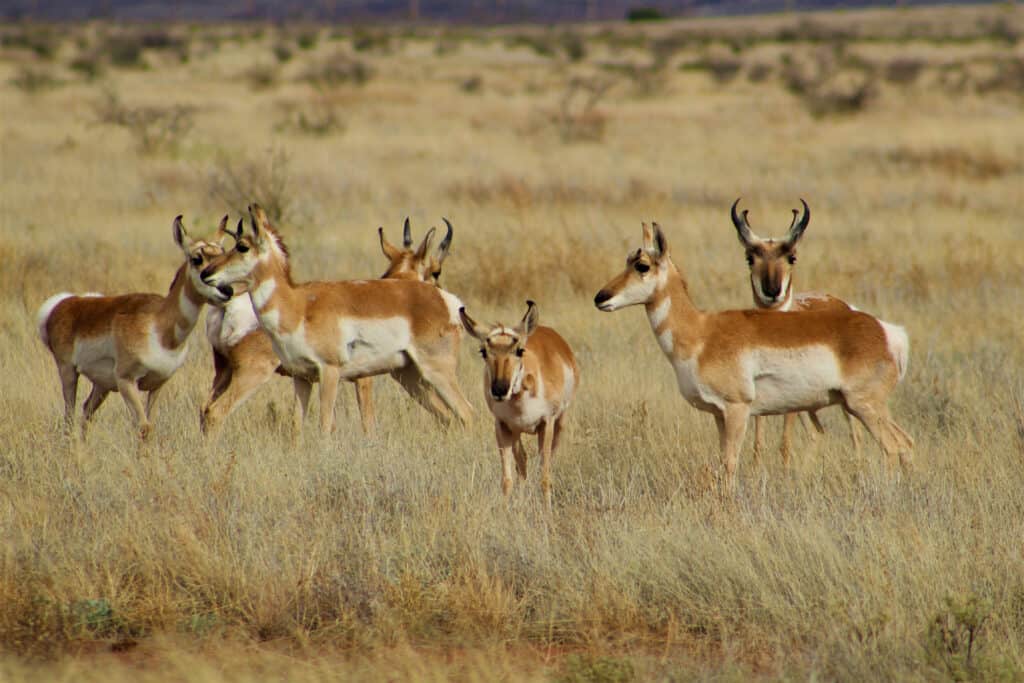
The pronghorn buck has nine olfactory glands, but the doe only has six.
©Charles Lemar Brown/Shutterstock.com
Because of its diurnal and nocturnal nature, a pronghorn can be seen both day and night. The male travels as far as 10 kilometers (6.2 miles) to spray his scent glands and mark his territory daily. Their use of scent communication allows them to identify their territory and warn one another of potential threats.
The pronghorn buck has nine olfactory glands, but the doe only has six. The glands behind the ears are employed for scent marking during mating season, and the glands located in the rump serve an important purpose when threatened.
9. Pronghorn Offspring Are Mobile Shortly After Birth
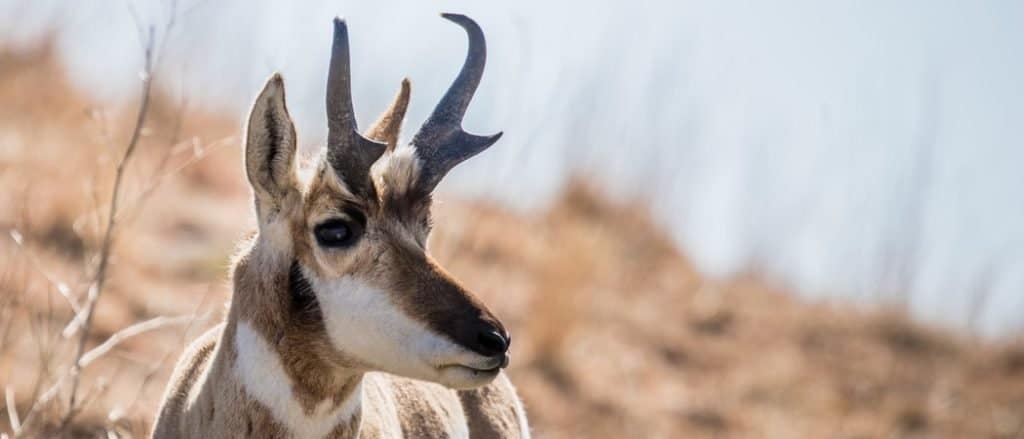
At just four days old, baby pronghorns can already outpace humans
©Jen DeVos/Shutterstock.com
Baby pronghorns might take their first fumbling steps as soon as 30 minutes after birth. They can already outpace humans at just four days old, and by the time they’re a week old, they can outrun horses! Pronghorn calves are milk-fed exclusively by their moms until they reach 4 or 5 months of age.
10. Pronghorns Have Big Eyes and Great Eyesight
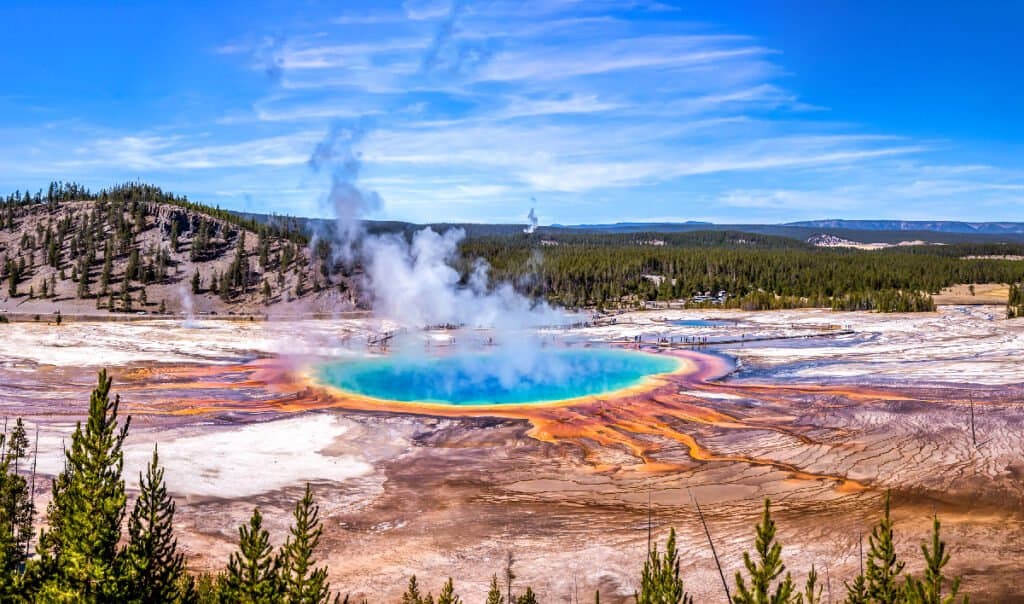
Yellowstone National Park is home to several ungulate species, including grizzly bears, pronghorns, white-tailed deer, badgers, otters, and badgers
©Lillac/Shutterstock.com
Pronghorns have long, black eyelashes that function as sun visors, and the pronghorn’s wide field of vision (320 degrees) makes it an excellent predator. The pronghorn antelope’s eyesight and depth perception are both exceptionally developed. At a range of 3 miles, it is capable of noticing the tiniest of movements (5 kilometers). Pronghorn possesses the largest eyes of any North American ungulate in relation to their body size. Each eyeball is around 1.4 inches in diameter (3.6 centimeters).
Related Animals:
The photo featured at the top of this post is © BGSmith/Shutterstock.com
Thank you for reading! Have some feedback for us? Contact the AZ Animals editorial team.




